Ok, so maybe it’s debatable whether Neeps are Scotland’s favourite vegetable, but we think they certainly feature very highly on the list…
If pushed, we might admit that potatoes, or tatties as they’re affectionately known here, are the real favourite, but neeps would only be a smidge behind, we swear!
They’re definitely an underrated vegetable, sidelined by the haggis and tatties, but we think they deserve to be highlighted too!
What are neeps?
If you’ve not spent much time in Scotland or with Scottish people, you might be wondering what exactly people are talking about when they say “neeps”.
When we talk about neeps we’re referring to the root vegetable you’ll most likely see mashed alongside haggis and tatties on a plate.
The word likely comes from a shortening of turnip. Except that neeps aren’t the turnips you might be thinking of… they’re Swedish turnips, also known as swede or swedes.
In other parts of the world, you might find them referred to as rutabaga or yellow turnip.
And just to be confusing, some places in Scotland also use the word tumshie, and some even smaller areas in the southwest use baigie.
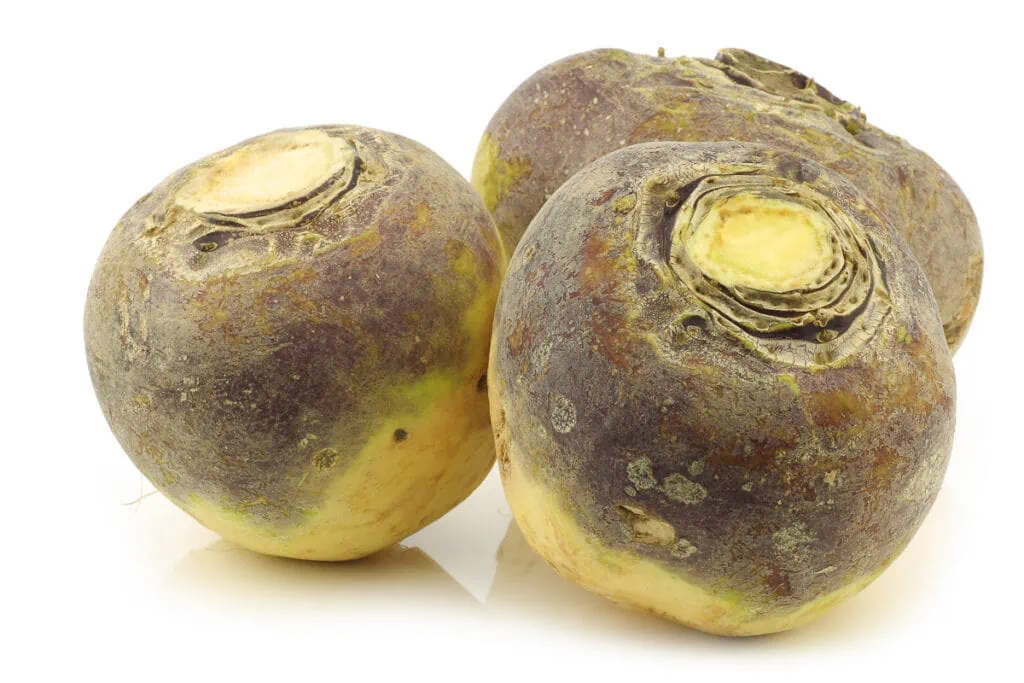
What’s the difference between swedes and turnips?
A swede (or neep!) has rough purple skin that can be green-tinged, and the flesh inside is a cream to yellow colour. They’re tough and can be hard to cut and sizes range from as small as a fist to about as big as your head!
A turnip, on the other hand, is usually smaller with smoother purple/white skin and white flesh. They’re also softer and easier to cut.
Where do swedes come from?
The hint is in the name, as this root vegetable was developed in Sweden in the 17th century. It’s actually a cross between a cabbage and a turnip and was created to resist frosty weather.
The name Rutabuga actually comes from the Swedish word rotabagge, which is a combination of rot (root) and bagge (lump/bunch).
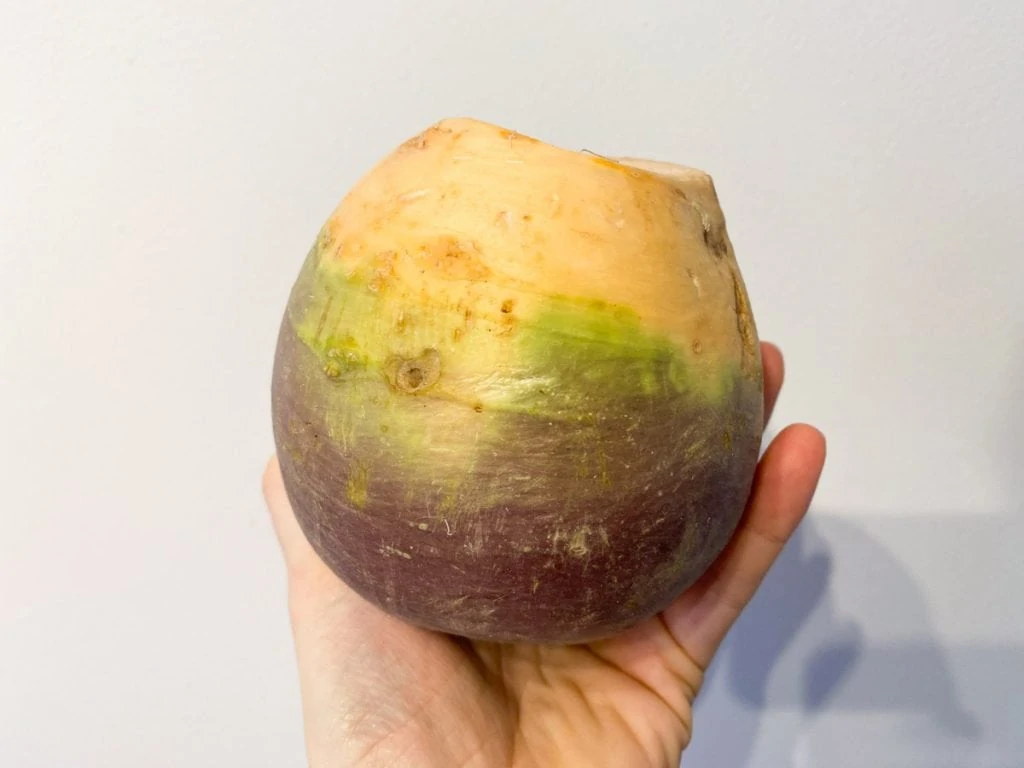
What do neeps taste like?
Neeps are a root vegetable, so are similar to a potato in that sense. They can also be used in the same way in soups and as a mash.
The flavour is a little nuttier and sort of buttery, so when roasted they also taste sweeter and can be a bit like butternut squash.
Swedes don’t have as many carbohydrates that turn into sugars as potatoes, so they’re actually a healthier alternative to recipes calling for potatoes.

How do you cook a neep?
Neeps take a bit of preparation for cooking, thanks to their toughness. You’ll want a large sharp knife, but be careful with it!
- Cut a slice off the bottom of the neep (opposite to the stalk end) to give you a flat base to work work. Now cut off strips from the top where the stalk was down to the bottom. You can remove around 2mm, or enough so that there is no green tinge left to the flesh.
- Cut off the remains of the stalk and you have a nice, skinless neep to work with!
- Usually, I then cut it in half and lay the flat half down to cut into strips, and then cubes roughly 1.5-2cm each.
And now you can cook your diced neep!
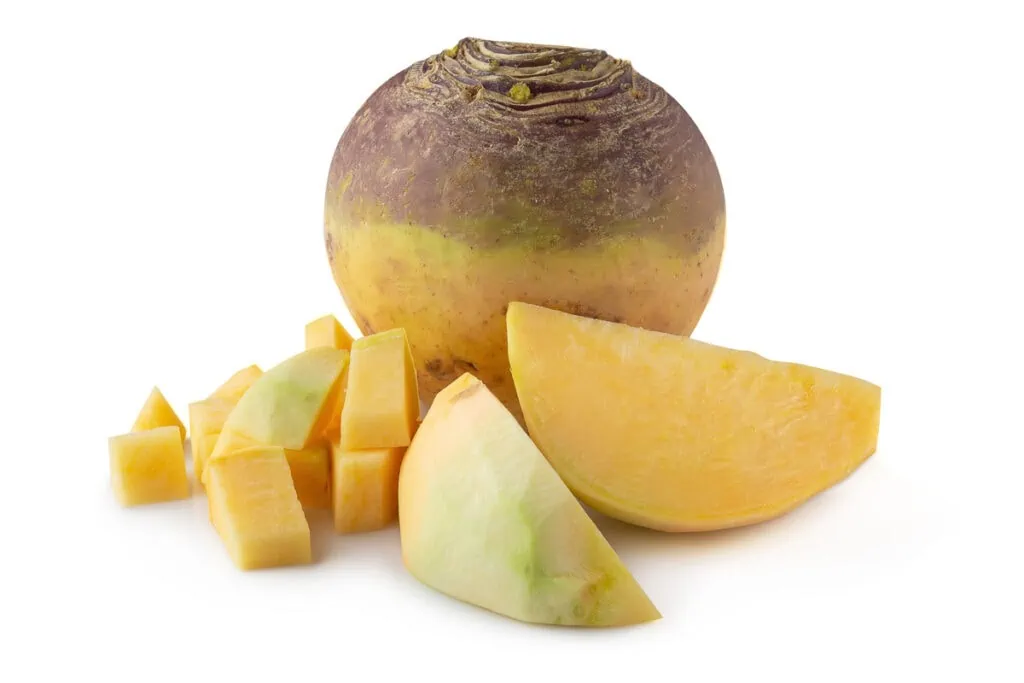
Neeps can be boiled in as little as 15 minutes, although we usually suggest slightly longer to really soften them up and bring out the sweet flavour. I’ve even seen recipes where people cook them for up to 2-3 hours, topping up with boiling water as it runs low! This is a little much for me, but it’s entirely up to you.
Neeps are best eaten the day they’re cooked, although you can keep them in the refrigerator for up to 3 days and reheat them.
You can also freeze diced neeps and cook them at another time if you have too much for the recipe you’re using.
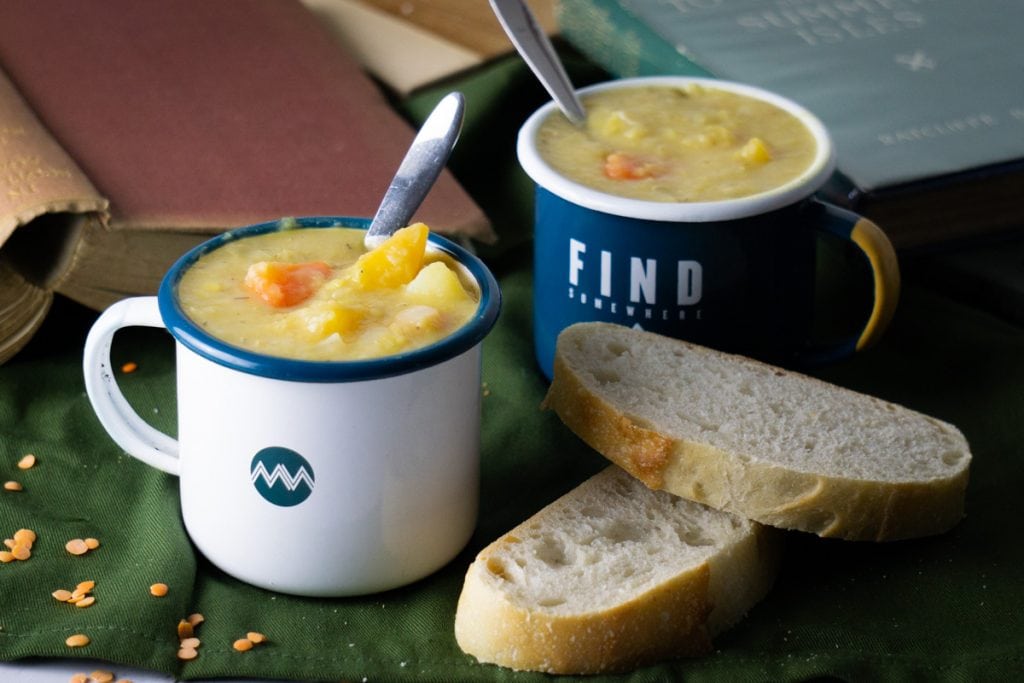
How to cook a swede in the microwave
And now we’re going to let you in on the secret of cooking a neep in the microwave! Yes, it’s possible! Plus this way you get to avoid all that chopping and hard work with a knife.
Firstly you’ll want to wash the swede to avoid having a sticky residue build up on the outside during cooking. Alternatively, wrap it in paper towels and prick the paper towels a few times to allow air to get out. This will help to absorb the stickiness too.
Place on a plate to catch any residual stickiness and put in the microwave. Cook on high for 15 minutes, then turn it over and cook for another 10-15 depending on the size of the neep.
You can test if it’s cooked by pushing a skewer in and seeing if it’s soft all the way through. It can also make a sort of hissing or “singing” sound as it’s cooking, hence the process is sometimes called the “singing swede”.
You’ll want to rest the neep for around 5 minutes because it will be very hot. Then cut in half and scoop out the flesh, or cut off the top and scoop it out. The skin should basically peel away.
Add butter and seasoning and it’s ready to eat!
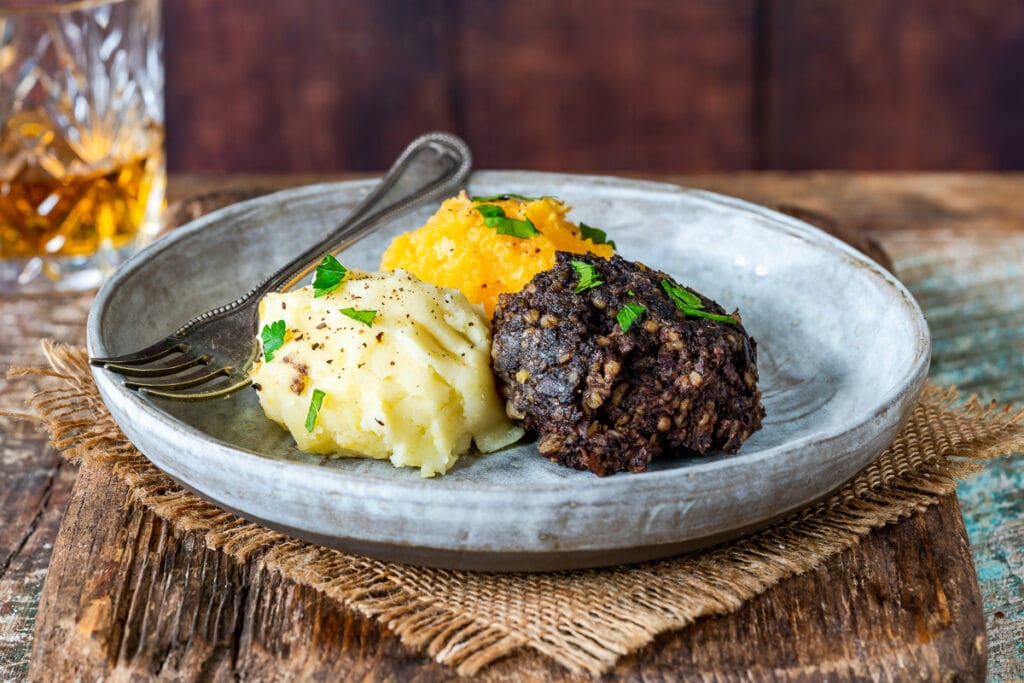
Recipes with Neeps
The most classic that you’ll hear of is Haggis, Neeps, and Tatties of course! You can read how to make a Haggis, Neeps, and Tatties Stack here, or Veggie Haggis here.
Rumbledethumps, a mashed mixture of potato, cabbage, and cheese, often includes neeps too.
We also add neeps to many of our soups including these:
- Scottish Lentil Soup
- Scotch Broth (Classic and Vegetarian)
Neep Lanterns/Tumshie Lanterns
Before pumpkins became more popular in Scotland large neeps were used to carve out faces for Halloween decorations and then a candle was placed inside. Definitely a lot harder than carving a pumpkin, which is why you’ll see them less these days.
And that’s probably everything you need to know about neeps! Will you give them a go?
Sonja & Phil x

They are also known as Rutabaga in the USA. I was born and raised in Glasgow,Scotland and we never called it anything else but Turnip. My very favourite veggie. I often make Turnip Soufflé which is very good and best part is, you can make it ahead and either cook it or just reheat when serving. The recipe is on the internet but I have been making it since before then. I make it all in my food processor, including the mashing. Makes it lovely and fine.
I always thought that “neeps” came from the Gaelic for turnip which is “snèap”. My father always called neeps and tatties “snèap is buntà”.
I love a bit of buttery neeps with my mash but here, in my part of Canada, good proper haggis is hard to come by which is too bad. I also love to rough mash it with some carrots. And my sister-in-law makes a killer turnip puff. Thanks for the tip about freezing cubed turnip. Will give that a go next time I have too much of the veg.
Thanks for your comments!